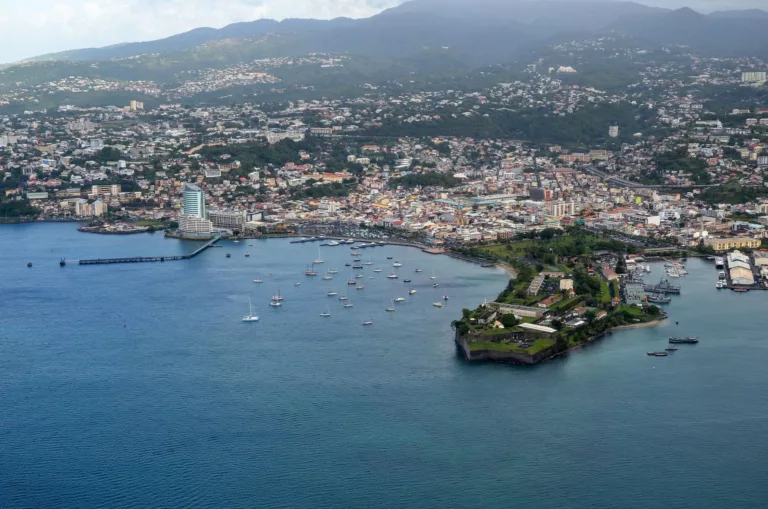Martinique - Best Ports, Anchorages, and Boatyards
PORTS & ANCHORAGES IN
Leeward coast
Martinique's west coast offer a protection from the swell, and steady trade winds that offer predictable passages.
Infrastructure here is primed for maritime activities, with services ranging from boat repair to sophisticated marinas, catering to an international fleet of vessels. Le Marin stands out as a hub of nautical activity, boasting a full-service marina that facilitates everything from customs clearance to provisioning. The comprehensive amenities available to sailors in these ports underline the island's commitment to supporting a robust sailing culture. While the ports ensure safety and convenience, they also contribute significantly to the local economy.
The island's anchorages reveal an environment where biodiversity thrives. Sheltered bays, such as those near Saint-Pierre, offer moorings within view of submerged volcanic ruins, allowing for a unique underwater exploration opportunity. Efforts to maintain the health of these ecosystems are evident, with regulations in place to protect the marine life that underpins the area's ecological and economic wealth.
Windward coast
Martinique's east coast, facing the Atlantic Ocean, offers a sailing experience that is markedly different from the island's calmer Caribbean side. This stretch of coastline is less traveled but rewards the intrepid sailor with stunning natural beauty, unspoiled landscapes.
Here, the trade winds blow with more vigor, and the Atlantic swell shapes the journey. Navigation on the east coast demands attentiveness and respect for the sea's power. Charts and GPS are indispensable tools as sailors contend with fewer marked channels and the need for precise course plotting.
The Presqu'île de la Caravelle, a nature reserve, offers stunning hiking trails that lead to rugged cliffs with expansive ocean views. The mangroves near Vauclin provide a sanctuary for birdlife and are best explored by kayak or paddleboard when the sea conditions permit.
In places like Le Robert and Le François, sailors can navigate a maze of small islets and dine on the freshest seafood.
The famous "Fonds Blancs," shallow white sandbanks, are perfect for a midday swim in crystal-clear waters.
Though less populated, the east coast is home to a resilient community that has adapted to the Atlantic's whims. In small fishing villages, you can witness the construction of traditional yoles—wooden boats used in the island's iconic boat races. Sailing the east coast of Martinique isn't for everyone. It's for the sailors who crave authenticity and challenge.
Climates
Martinique enjoys a tropical climate where the sun is a near-constant, but the heat is often tempered by the cooling Alizés, making it a year-round destination.
Sailing Season
Rainy Season (June to October)
Characterized by higher humidity and frequent rain showers, especially in the northern parts of the island.
Dry Season (December to April)
Known as the "Carême," this period sees less rain and more temperate conditions.
Prevailing winds
Two main winds influence sailing in Martinique:
Trade Winds
These easterly winds are consistent and moderate, especially during the high sailing season.
Hurricane Season
During this time, the winds can become erratic.
Storm Risks: The hurricane season can give rise to tropical storms and even hurricanes, leading to intense wind gusts. These storm systems can form rapidly and require careful monitoring for those on the water. Unlike the steady trade winds experienced during other months, the winds during the hurricane season can change quickly in both speed and direction.
Official website for visas to France
The water quality in Martinique is generally considered to be good, meeting the standards set by both local authorities and the European Union, of which Martinique is an overseas region.
Tap water in the main cities and towns, including the capital Fort-de-France, is typically safe to drink. However, in some remote areas, it might be advisable to use bottled water or water purification methods.
The standard voltage on the island is 230 V, with a standard frequency of 50 Hz, and the power plugs and sockets used are of type E.
Most marinas are equipped with shore power facilities, offering various amp options to suit different vessel needs.
In Martinique, sailors can find fuel of high quality, complying with international standards. Fuel is accessible at major marinas and ports across the island.








